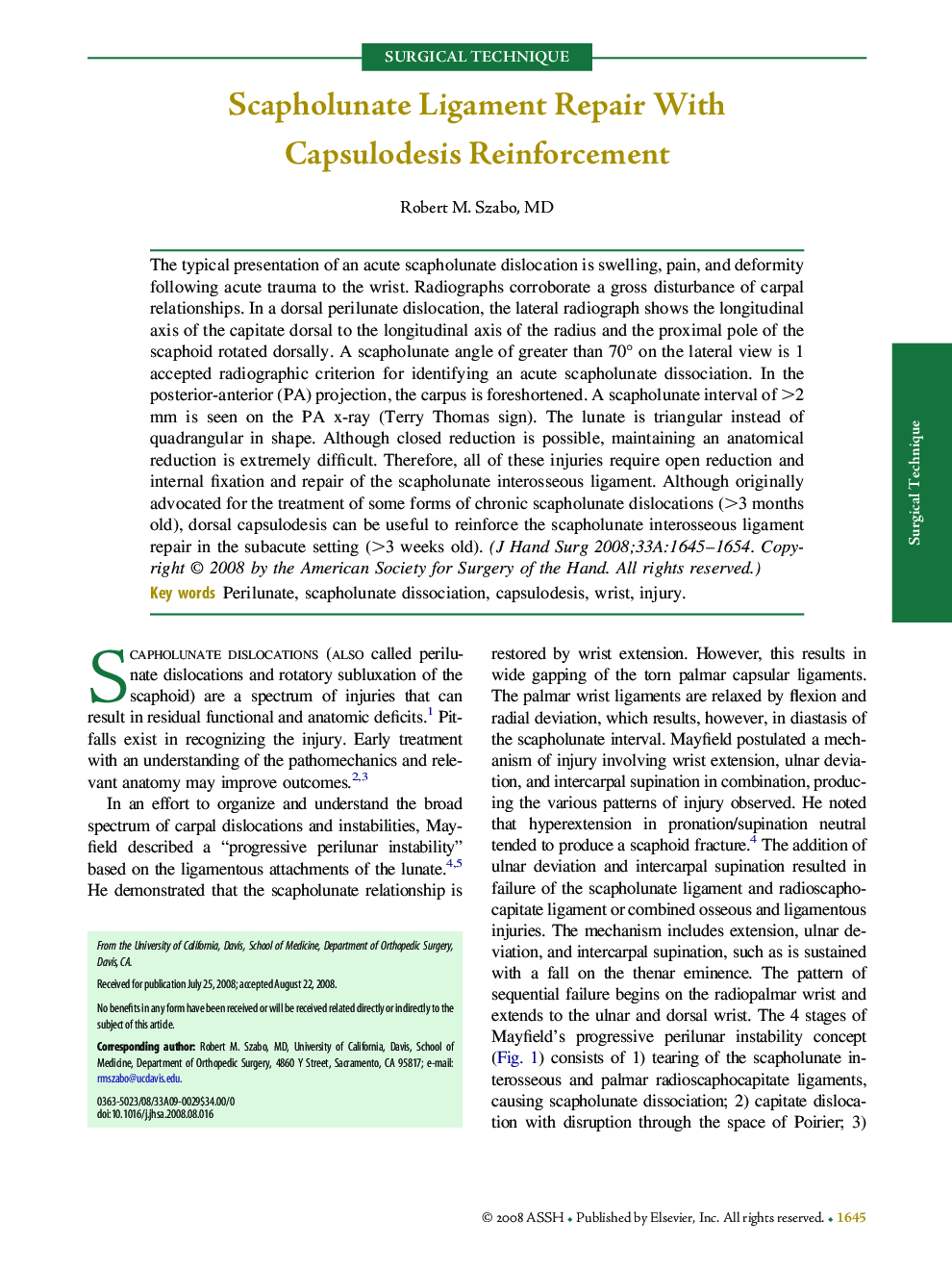| کد مقاله | کد نشریه | سال انتشار | مقاله انگلیسی | نسخه تمام متن |
|---|---|---|---|---|
| 4069790 | 1604439 | 2008 | 10 صفحه PDF | دانلود رایگان |

The typical presentation of an acute scapholunate dislocation is swelling, pain, and deformity following acute trauma to the wrist. Radiographs corroborate a gross disturbance of carpal relationships. In a dorsal perilunate dislocation, the lateral radiograph shows the longitudinal axis of the capitate dorsal to the longitudinal axis of the radius and the proximal pole of the scaphoid rotated dorsally. A scapholunate angle of greater than 70° on the lateral view is 1 accepted radiographic criterion for identifying an acute scapholunate dissociation. In the posterior-anterior (PA) projection, the carpus is foreshortened. A scapholunate interval of >2 mm is seen on the PA x-ray (Terry Thomas sign). The lunate is triangular instead of quadrangular in shape. Although closed reduction is possible, maintaining an anatomical reduction is extremely difficult. Therefore, all of these injuries require open reduction and internal fixation and repair of the scapholunate interosseous ligament. Although originally advocated for the treatment of some forms of chronic scapholunate dislocations (>3 months old), dorsal capsulodesis can be useful to reinforce the scapholunate interosseous ligament repair in the subacute setting (>3 weeks old).
Journal: The Journal of Hand Surgery - Volume 33, Issue 9, November 2008, Pages 1645–1654